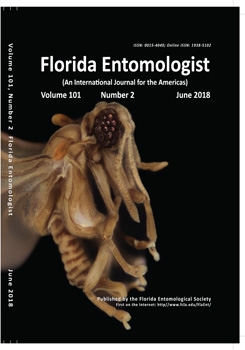The wing shape of butterflies can be used as a character to measure individual butterfly and population-level differences in adult forms. We conducted a geometric morphometric analysis of wing shape for Speyeria diana (Cramer & Stoll 1777) (Lepidoptera: Nymphalidae), a species currently threatened by extirpation across portions of its range. We photographed and digitized 243 pinned S. diana specimens from natural history museums in North America and Europe to compare wing shape and size across the historical and current distribution. We used principal components analysis (PCA) to compare variation in landmarks on forewings and hind wings. We used the principal component scores in a multiple analysis of variance (MANOVA) to test for differences, and interactions, between male and female specimens, eastern and western specimens, low and high elevation specimens, and specimens collected before and after 1950. We found significant differences between wing shape in male and female specimens, with male forewings being narrower and more elongated, possibly making them well suited for patrolling behavior. Female forewings were more rounded and wider, possibly reflecting their life history, because much of their life is spent on the forest floor in search of oviposition sites. We found significant regional differences in male forewing shape, reflecting the long-term geographic and genetic separation between these groups. We also found significant differences in female forewing shape between low and high elevation sites. Speyeria diana female forewings from high elevation populations were narrower than low elevation populations, indicating that these females may be more mobile than those from low elevations with wider forewings. There were no effects of yr since capture of specimens. The wing shape of western populations of S. diana appears to be adapted for low dispersal, supporting other recent findings that also indicate western populations of S. diana are both spatially and genetically isolated. We conclude that the future of S. diana will require the thoughtful preservation of well-connected high elevation habitats, especially in the western distribution where dispersal is more limited than in the east.
How to translate text using browser tools
1 June 2018
Geomorphic Morphometric Differences between Populations of Speyeria diana (Lepidoptera: Nymphalidae)
Carrie Wells,
Arryn Munn,
Chelsea Woodworth

Florida Entomologist
Vol. 101 • No. 2
June 2018
Vol. 101 • No. 2
June 2018
ALA
butterfly
conservación
conservation
Diana fritillary
fritilaria de Diana
mariposa




